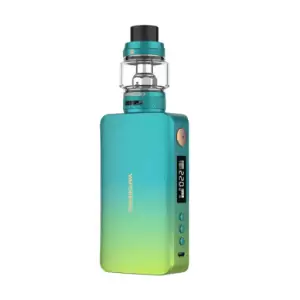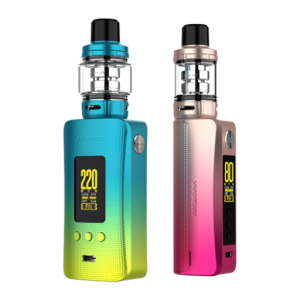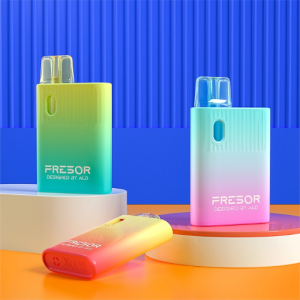Introduction to Vaping and Disposable Vapes
Vaping has surged in popularity over the last decade, becoming a prominent part of modern social culture. This rise can be attributed to its perception as a safer alternative to traditional smoking, coupled with the diverse range of flavors and devices available. At the heart of this vaping revolution are disposable vapes, a category that has seen exponential growth due to its convenience, affordability, and accessibility.
Disposable vapes are designed for single-use, offering a hassle-free vaping experience without the need for refilling e-liquid or charging batteries. Their appeal lies in their simplicity and the immediate satisfaction they provide, making them especially popular among beginners and those transitioning from smoking to vaping. Crafted to mimic the traditional smoking experience, these devices have become a staple for individuals seeking a nicotine fix in a more socially acceptable form.
Experts in the field, like Dr. James Wang, a researcher in nicotine addiction and public health, emphasize the significance of understanding disposable vapes. He states, “Understanding the mechanics and appeal of disposable vapes is crucial in addressing the broader implications of vaping on public health and regulatory policies.” This perspective underlines the importance of comprehensive knowledge about these devices, not just for consumers but also for policymakers and health advocates.
As we delve deeper into the world of disposable vapes, it becomes clear that their simplicity does not negate the complexity of their impact on health, regulation, and society. The following sections will explore the components and mechanics of disposable vapes, their global usage trends, and the intricate tapestry of international laws that govern their sale and use.

The Components and Mechanics of Disposable Vapes
Delving into the intricate world of disposable vapes, it’s essential to understand what sets these devices apart in terms of design and functionality. A disposable vape is a compact, non-rechargeable device, pre-filled with e-liquid and designed for single use. It consists of several key components: a battery, atomizer, e-liquid reservoir, and a mouthpiece.
The battery powers the atomizer, which heats the e-liquid to produce vapor. The e-liquid, usually containing nicotine, propylene glycol (PG), vegetable glycerin (VG), and flavorings, is stored in a small reservoir. When a user inhales through the mouthpiece, the liquid is drawn into the atomizer, vaporized, and then inhaled, delivering nicotine in a flavorful aerosol form.
Renowned physicist Dr. Angela Russo, who specializes in aerosol technologies, provides insight into the efficiency of disposable vapes. She explains, “The simplicity of disposable vapes belies the sophistication of their delivery systems. They are engineered to efficiently convert liquid to vapor, providing a consistent dose of nicotine with each puff, which is a key aspect of their appeal.”
Understanding the mechanics behind these devices reveals the balance between convenience and technological innovation that disposable vapes offer. They eliminate the need for maintenance, such as coil replacement and battery charging, presenting a straightforward solution for users seeking a no-fuss vaping experience. This simplicity, however, also raises questions about environmental impact and waste, given the single-use nature of these devices.
In summary, the allure of disposable vapes lies not just in their ease of use but also in the sophisticated technology that enables a compact, efficient, and satisfying vaping experience. As we continue to explore the implications of their widespread use, it’s crucial to consider both the technological advancements they represent and the challenges they pose to public health and environmental sustainability.
Usage Trends of Disposable Vapes Across Different Countries
The global landscape of disposable vapes usage reflects a complex tapestry of cultural, regulatory, and economic factors. In recent years, statistical insights have illuminated a significant surge in the popularity of disposable vapes across various regions, underscoring a shift in smoking habits and the adoption of vaping as a preferred alternative.
In the United States, for instance, the convenience and variety of flavors have made disposable vapes especially popular among young adults and teenagers, prompting concerns about youth vaping. The Centers for Disease Control and Prevention (CDC) reports a noticeable uptick in e-cigarette use among high school students, with disposable vapes being a major contributor to this trend.
Comparatively, in the European Union, stringent regulations on nicotine content and advertising have shaped a different pattern of disposable vape usage. Countries like the United Kingdom have embraced vaping as a smoking cessation tool, leading to a more mature market where disposable vapes are used predominantly by adults trying to quit smoking.
In Asia, the scenario varies widely between countries. Nations like Japan have seen a rise in the use of disposable vapes due to strict regulations on traditional tobacco products, while others, such as Thailand, have imposed heavy restrictions or outright bans on the sale and use of e-cigarettes, affecting the availability and popularity of disposable vapes.
Market analyst Dr. Simon Choi comments on the diversity of vaping trends, stating, “The global market for disposable vapes is influenced by a myriad of factors, including health policies, taxation, and cultural attitudes towards smoking and vaping. Understanding these dynamics is crucial for navigating the international landscape of tobacco harm reduction.”
These differing trends highlight the complex interplay between consumer behavior, public health initiatives, and regulatory frameworks across the globe. As disposable vapes continue to gain traction, it’s imperative to monitor these patterns to gauge their impact on public health, regulatory policies, and the future trajectory of smoking cessation efforts worldwide.
International Laws Governing Disposable Vapes
The regulatory landscape for disposable vapes varies significantly across the globe, reflecting diverse public health policies, cultural attitudes towards smoking, and concerns about youth vaping. These laws not only influence the availability and usage of disposable vapes but also shape the industry’s innovation and marketing strategies.
In the United States, the Food and Drug Administration (FDA) plays a pivotal role in regulating e-cigarettes and vaping products. Recent regulations have focused on curbing underage vaping by restricting the sale of flavored disposable vapes that are appealing to teenagers. The FDA requires manufacturers to submit premarket tobacco product applications (PMTAs) for their products, a process that evaluates their safety and public health impact.
The European Union adopts a more uniform approach with the Tobacco Products Directive (TPD), which sets standards for the manufacture, presentation, and sale of tobacco and related products, including disposable vapes. The TPD limits nicotine concentration and volume in e-liquids, mandates child-resistant packaging, and imposes strict labeling and advertising guidelines to discourage non-smokers from vaping.
In contrast, countries like Singapore and Thailand have taken a hard stance by banning the sale and use of e-cigarettes entirely, including disposable vapes. These bans reflect concerns over health risks associated with vaping and the potential for e-cigarettes to serve as a gateway to smoking for non-smokers and young people.
Legal expert Dr. Helen Zhao, specializing in international public health law, notes, “The regulatory environment for disposable vapes is as diverse as the countries themselves. While some nations view e-cigarettes as a harm reduction tool and regulate them accordingly, others see them as a threat to public health and have opted for outright bans.”
This patchwork of international laws presents challenges and opportunities for the vaping industry. Companies must navigate these complex regulations to enter or expand in different markets, often leading to innovative product developments or shifts in marketing strategies to comply with local laws.
As disposable vapes continue to evolve, the international community faces the task of balancing regulation with harm reduction. Striking this balance is crucial for protecting public health, particularly among young people, while offering smokers a potentially less harmful alternative to traditional cigarettes.
Health Concerns and Public Safety Issues
The debate over the health implications of disposable vapes is multifaceted, touching on concerns ranging from the direct effects of vaping on individual health to broader public safety issues. As disposable vapes have become more prevalent, so too have questions about their safety and impact on public health, especially compared to traditional smoking.
One of the primary health concerns is the inhalation of chemicals present in the vapor of disposable vapes. While it’s widely acknowledged that vaping emits fewer harmful chemicals than combustible tobacco products, studies have identified substances in e-cigarette vapor, such as formaldehyde and acrolein, that can cause harm to the lungs and cardiovascular system over time. Dr. Lisa Richardson, a leading pulmonologist, emphasizes, “Although disposable vapes present a lower risk than traditional cigarettes, they are not without their own risks. It’s crucial for users to be aware of the potential for harm, particularly with long-term use.”
Public safety concerns also extend to issues such as battery explosions, which, though rare, pose a significant risk to users. The compact, non-rechargeable batteries in disposable vapes are generally considered safer than those in rechargeable models, but incidents of malfunction can still occur, leading to injuries.
Moreover, the accessibility and appeal of disposable vapes to young people have raised alarms about youth vaping. The flavors and marketing strategies often associated with disposable vapes have been scrutinized for potentially enticing non-smokers and minors, contributing to an uptick in nicotine addiction among adolescents. Regulatory bodies and public health organizations worldwide are grappling with how to address this challenge effectively, seeking to prevent a new generation from becoming addicted to nicotine.
Disposable vapes also pose environmental health concerns due to their single-use nature, contributing to electronic waste. The disposability of these devices means that they often end up in landfills, raising questions about the environmental footprint of vaping and the need for sustainable disposal methods.
In conclusion, while disposable vapes offer a less harmful alternative for existing smokers, they are not without health and safety concerns. Ongoing research and policy development are crucial to ensure that the public is informed and protected, balancing the benefits of harm reduction with the need to mitigate risks associated with their use.
Best Practices for Using Disposable Vapes
Adopting best practices for the use of disposable vapes is crucial not only for ensuring a safe and enjoyable vaping experience but also for mitigating the potential health risks and environmental impact associated with these devices. Here are some guidelines and tips for responsible vaping:
Understand the Product: Before using a disposable vape, familiarize yourself with its components, nicotine content, and usage instructions. This knowledge can help you use the product safely and effectively.
Start with Lower Nicotine Levels: For new vapers, particularly those who are not former smokers, starting with a lower nicotine concentration can reduce the risk of developing nicotine dependence.
Proper Disposal is Key: Disposable vapes contribute to electronic waste, which poses environmental hazards. Users should dispose of these devices at designated electronic waste recycling centers to minimize their environmental footprint.
Beware of Counterfeit Products: The market is flooded with counterfeit vaping products that may not meet safety standards. Purchase disposable vapes from reputable sources to ensure you’re getting a genuine product.
Adhere to Local Laws and Regulations: Vaping laws vary by country and even by region within countries. Always comply with local regulations regarding vaping in public spaces, sale restrictions, and age limits.
Consider the Health Implications: While disposable vapes are considered less harmful than traditional cigarettes, they are not risk-free. Be mindful of the potential health effects, especially if you have pre-existing health conditions or are pregnant.
Seek Alternatives for Quitting Smoking: If you’re using disposable vapes as a tool to quit smoking, consider other nicotine replacement therapies and support systems that may offer a healthier path to cessation.
Dr. Emily Ford, a specialist in addiction medicine, stresses the importance of education and regulation: “Educating consumers about the safe use of disposable vapes and enforcing regulations to ensure product safety are critical steps towards minimizing health risks and promoting public safety.”
By following these best practices, individuals can make more informed decisions about their vaping habits, contributing to their own well-being and the health of the community. As the conversation around disposable vapes continues to evolve, it is essential for users, manufacturers, and policymakers to engage in ongoing dialogue and research to ensure that vaping remains a safer alternative to smoking, without unintended consequences.
Future of Vaping: Regulations, Innovations, and Market Trends
The future landscape of disposable vapes is poised at the intersection of evolving regulations, technological advancements, and shifting market dynamics. As stakeholders navigate the challenges and opportunities ahead, several key trends are likely to shape the trajectory of the vaping industry.
Regulatory Evolution: In response to public health concerns, particularly regarding youth vaping, governments worldwide are expected to tighten regulations around disposable vapes. This could include stricter age verification processes, limitations on flavors, and more stringent labeling and marketing guidelines. Dr. Marcus O’Brien, an expert in public health policy, predicts, “Regulations will become more harmonized globally, aiming to strike a balance between harm reduction for smokers and protecting the youth from nicotine addiction.”
Technological Innovations: The vaping industry is known for its rapid pace of innovation. Future disposable vapes may feature enhanced safety mechanisms, such as improved battery technology to prevent malfunctions and more efficient delivery systems that minimize harmful by-products. The development of biodegradable materials could also address environmental concerns related to disposable vape waste.
Market Adaptation: As regulations evolve and consumer preferences shift, the market for disposable vapes will likely see significant changes. There could be a move towards more sustainable and reusable vaping products, or an increase in demand for disposable vapes with lower nicotine content, catering to a broader audience seeking less addictive options.
Consumer Behavior and Awareness: Growing awareness about the health implications of vaping and the environmental impact of disposable vapes will influence consumer behavior. Users may become more discerning, prioritizing products that offer transparency about ingredients, safety features, and environmental sustainability.
Global Health Perspectives: The role of disposable vapes in smoking cessation and tobacco harm reduction will continue to be a topic of debate among health professionals. Ongoing research into the long-term effects of vaping will be crucial in shaping public health recommendations and policies.
In conclusion, the future of vaping and disposable vapes in particular is likely to be characterized by a delicate balance between innovation, regulation, and market responsiveness. The industry’s ability to adapt to these changes while prioritizing safety, efficacy, and environmental responsibility will be key to its sustainability and growth. As we move forward, continued dialogue among manufacturers, policymakers, health experts, and consumers will be essential in navigating the evolving landscape of vaping.

FAQs: Common Questions About Disposable Vapes
As the conversation around disposable vapes continues to grow, several common questions emerge from both new and experienced users. Addressing these inquiries can help demystify aspects of disposable vape usage, safety, and regulations. Here are some frequently asked questions:
What makes disposable vapes different from other vaping devices?
Disposable vape are designed for single use, with a pre-charged battery and pre-filled e-liquid. They are ready to use out of the box, requiring no maintenance or refill, making them convenient but less environmentally friendly than rechargeable models.
Are disposable vapes safer than smoking cigarettes?
While disposable vape are generally considered less harmful than traditional cigarettes due to the absence of tobacco combustion, they are not risk-free. They contain nicotine, which is addictive, and other substances that may pose health risks with long-term use.
Can disposable vapes help me quit smoking?
Many users find disposable vape a helpful tool in transitioning away from smoking. However, success in quitting smoking depends on various factors, including personal commitment and potentially seeking additional support such as counseling or other nicotine replacement therapies.
What are the environmental impacts of disposable vapes?
The single-use nature of disposable vape contributes to electronic waste and environmental concerns. Proper disposal and recycling efforts are essential to mitigate their ecological footprint.
How are disposable vapes regulated?
The regulation of disposable vape varies by country and region, with some places imposing restrictions on sale, flavors, and nicotine content, while others may have more lenient or even prohibitive laws against vaping products.
What should I do if a disposable vape malfunctions?
In the event of a malfunction, it’s advisable to stop using the device immediately and dispose of it properly. Do not attempt to open or repair a disposable vape, as this can pose safety risks.
How can I ensure I’m using disposable vapes responsibly?
To use disposable vape responsibly, adhere to local laws, be mindful of the nicotine content, avoid sharing with minors or non-smokers, and always dispose of the device properly at an electronic waste recycling center.






